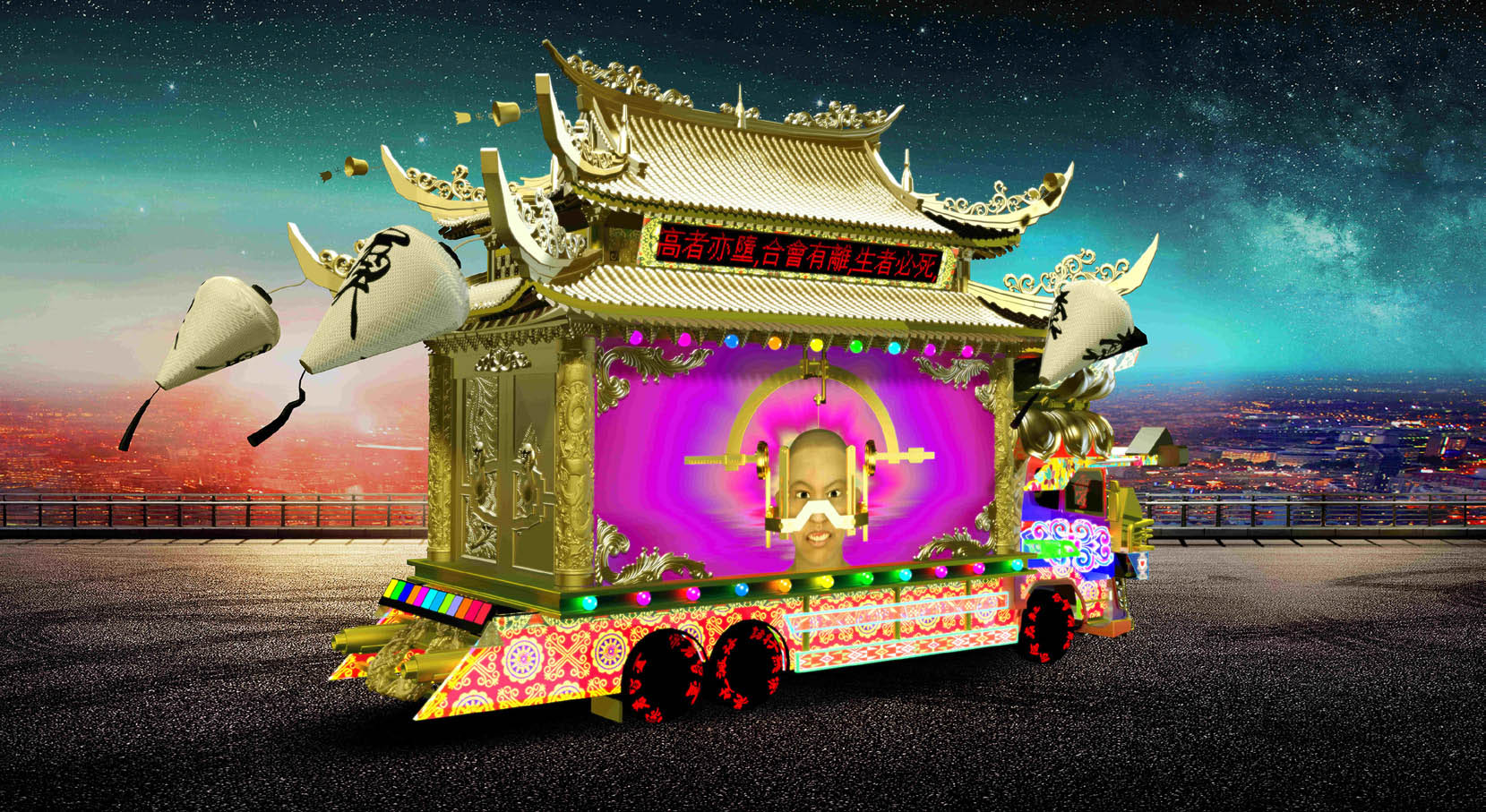Micro Era - Media Art from China
Group Exhibition
Kulturforum
5 September 2019 – 26 January 2020
Matthäikirchplatz
Berlin, Germany
With its many museums, libraries, and philharmonic concert halls, the Kulturforum near Potsdamer Platz is one of Germany’s leading sites of art, culture, and learning and is exceptional for the enormous diversity of the arts showcased there. From 5 September 2019 to 26 January 2020, Kulturforum will present the group exhibition ‘Micro Era- Media Art from China’. Invited by the Nationalgalerie, the two artists Cao Fei (1978) and Lu Yang (1984) asked the artists Fang Di (1987) and Zhang Peili (1957) for a dialogue. The exhibition is curated by Anna-Catharina Gebbers with co-curators Victor Wang and Yang Beichen, and curatorial advisor Pi Li.

LuYang, Delusional Mandala, 2015. Single-channel video, colour, sound, 16'27" (Video Still).
‘Micro Era’ is tied in with the 2001 group exhibition ‘living in time. 29 contemporary artists from China’ (https://www.smb.museum/en/exhibitions/detail/living-in-time.html), which showed how contemporary Chinese artists have responded to the economic, political, ideological but also technological changes in China since the 1980s. This approach is now continued with ‘Micro Era’.
Installations and single-channel videos
From documentary film images, and the adapted use of classical film language to the aesthetics of Japanese Anime, the works of this exhibition focus on and explore the relationships between mind, body and technology – with installations and single-channel videos ranging from the 1980s to the present. Historically, within the Euro-American context, video art is often regarded as a democratising art form – through the rapid circulation of information and global events by fast-access technologies. Cao Fei, Fang Di, Lu Yang, and Zhang Peili scrutinise the seductive thesis of this democratisation by reflecting in their visual language the mass production of goods as well as how images and virtual subjectivities are produced and consumed, and how we understand our world through imaging technology. At the same time, in the cross-generational exhibition with documentary, narrative and installation references and the expansion into virtual space, the central directions in the development of media art in China are presented.
The artists
Cao Fei (born in 1978 in Guangzhou, living in Beijing, China) combines in her films and installations social comments, pop-cultural aesthetics as well as references to surrealism and documentary film. Her works reflect the rapid, chaotic changes that are taking place in today's Chinese society. For ‘Micro Era’ Cao Fei presents her works ‘Asia One’ (2018) and ‘11.11’ (2018) for the first time in Germany. The multimedia installation, which is about the logistics sector, conveys the hyper-real vision of a near future and shows the effects of accelerated economic growth, technological developments and globalization on society. Cao Fei wished to see the young multimedia artist Fang Di as a dialogue partner on her exhibition area.

Zhang Peili, Opposite Space, 1995. Two-channel video installation with surveillance cameras and TV displays, colour, 500 x 140 x 350 cm (Installationview China Artistic Avantgarde Movements, Centre d’Art Santa Monica, Barcelona, Spain, 1995).
Fang Di's works (1987, Shenzhen, Guangdong, China) deal with issues of racism in a broader geopolitical context. By incorporating film materials from news and documentaries, his works combine various visual languages in order to critically examine these interconnections. Fang Di’s first large-scale institutional presentation in Europe so far is based on his work experience in Papua New Guinea for a Belt and Road Initiative company (which has been pooling China's interests and objectives to build up and expand intercontinental trade and infrastructure networks between the People's Republic of China and over 60 other African, Asian and European countries since 2013). His activities in the South Pacific Island Nation allowed him, analogous to embedded journalism, an intimate documentation of the current social situation.

Cao Fei, Asia One, 2018. Single-channel video installation, colour, sound, 63'20'' (Video Still).
Lu Yang (1984, Shanghai, China) interweaves virtual and physical architectures in her installations. The artist lures the viewer into the hells of images of an augmented reality and manipulated emotions symbolically represented by transcranial magnetic stimulation. With knowledgeable references to traditional Buddhism, techno religions, cyber feminism and Japanese subcultures, her works circle around gender stereotypes, beliefs in science and post-human ways of life. For ‘Micro Era’, Lu Yang has embedded the largest ever presentation of her works in an installation reminding us of the labyrinthine constructions of Comic Cons. She asked her former professor Zhang Peili for an exhibition dialogue.
Zhang Peili (1957, Hangzhou, China) is a pioneer of multimedia art and crucial to the development of the Chinese avant-garde and the emergence and spread of Chinese video art. His early work is often associated with the socio-political events that occurred during the heyday of the '85s New Wave movement, which led to the fact that the notions of xingwei yishu 行为艺术 [performance art] and yingxiang yishu 影像 艺术 [video art] were canonized in China. For ‘Micro Era’ Zhang Peili presents pioneering video art pieces such as ‘Opposite Space’ (1995).
For further information about this exhibition and the Kulturforum go to: https://www.smb.museum/en/museums-institutions/kulturforum/exhibitions/detail/micro-era.html